Explore the Best AI Image Gallery

AI in Graphic Design: Redefining Creativity and Ethics
As technology continues to evolve, artificial intelligence (AI) has emerged as a pivotal force in various fields, including graphic design. Traditionally seen as a realm for human creativity, graphic design is now experiencing a paradigm shift thanks to AI. Designers and artists are increasingly utilizing AI tools to enhance their work, streamline processes, and inspire new design paradigms. This blog post explores the impact of AI on graphic design, its potential uses, ethical considerations, and anticipated future trends.
The Impact of AI on the Creative Industry
The integration of AI into graphic design is reshaping the creative landscape in numerous ways. AI algorithms can analyze vast amounts of data to identify patterns, generate images, and even propose design solutions. Here are some significant impacts:
- Efficiency and Speed: AI tools enable designers to automate repetitive tasks, allowing them to focus more on conceptual work. For instance, AI-generated mockups can be produced within seconds, significantly reducing the time spent in the initial design phase.
- Novelty and Inspiration: AI can act as a source of inspiration by providing designers with fresh perspectives. Generative design algorithms can create unique visual elements, encouraging designers to experiment with styles and compositions they may not have considered.
- Personalization: AI assists in creating personalized content for target audiences. By analyzing user data, designers can tailor designs that cater to individual preferences, enhancing user experience and engagement.
Potential Uses of AI in Graphic Design
AI applications in graphic design are vast and continually innovating. Some notable uses include:
- Image Generation: Tools like DALL-E and Artbreeder allow designers to create and manipulate images with just a few clicks. These AI applications can combine various styles and elements to craft unique visuals.
- Logo Design: AI platforms like Looka and Canva's logo maker help businesses generate logos based on their inputs. These tools streamline the design process, making it accessible even to those without design expertise.
- Color Palettes: AI can analyze the emotional impact of colors and suggest effective color schemes tailored to specific branding needs. This capability enhances the designer's ability to evoke the desired feelings through their work.
- UI/UX Design: AI-driven user experience tools can predict user behaviors and preferences, enabling designers to create intuitive interfaces. By optimizing design based on real user data, designers can enhance product usability.
Ethical Considerations
As AI continues to gain prominence in graphic design, ethical dilemmas also arise. Below are some key concerns:
- Creativity and Ownership: The question of authorship becomes complex when AI generates content. Who should be credited for AI-generated designs? This ambiguity challenges traditional concepts of creativity and intellectual property.
- Job Displacement: The rise of AI might lead to fears of job loss in the design sector. While AI can handle certain tasks, it is essential to recognize that human creativity and emotional intelligence remain irreplaceable.
- Bias in Algorithms: AI systems can inherit biases from the data they are trained on. This can lead to designs that inadvertently reinforce stereotypes or exclude certain cultural elements, raising concerns about inclusivity and representation in design.
Future Trends
The interplay between AI and graphic design is poised to evolve in the coming years. Here are some trends to watch:
- Increased Collaboration: The future will likely see more collaborative tools that allow designers to work alongside AI systems in more meaningful ways, fostering a symbiotic relationship between human creativity and machine efficiency.
- Advanced Generative Design: As AI technology advances, the ability to create more sophisticated and contextually aware designs will improve. This could lead to entirely new genres of graphic design that blend human ideas with AI capabilities.
- Regulation and Ethical Frameworks: As the ethical implications of AI in design become more prominent, the industry may see the establishment of guidelines and regulatory measures to ensure responsible AI use.
- Sustainability in Design: AI's ability to analyze resources and design sustainable solutions could lead to greener practices in graphic design, contributing to larger environmental goals.
Conclusion
AI is significantly altering the graphic design industry, offering new tools and opportunities while raising crucial ethical questions. As designers navigate this evolving landscape, embracing the potential of AI while remaining vigilant about its implications will be crucial. Ultimately, AI is not just a tool; it is a partner in the creative process, reshaping how we think about design and art.












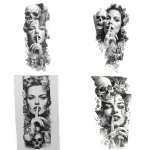







](https://images.ai-img.art/thumbnails/150/9127f72c6be19d533c26ac476f4d216cd89a6a2d7c351333489a3eff30c3ec5a.webp)
](https://images.ai-img.art/thumbnails/150/b90a5f332cb5d8f02116934e13abd20233e0eeb2368274dbdffaa2e281e4dff5.webp)

](https://images.ai-img.art/thumbnails/150/4a4f2a16da94ebadad64aeb3b0fb4e64d426431f1d651cc4929142c728fe85b7.webp)

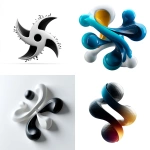

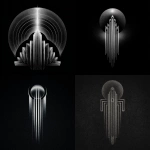

](https://images.ai-img.art/thumbnails/150/37f115f2fa75765b87e6d3e2c9f1b0a80a6a46efa8b864a05278c7fc0a0a62e7.webp)


](https://images.ai-img.art/thumbnails/150/24610c8978ce6b4f1ced8639b434482871adb07e38af8b90cd535f2533bf18cc.webp)




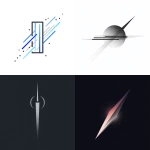
](https://images.ai-img.art/thumbnails/150/85464d88f1d4314cd042a02a6f41440fc3b4343db529794cbe8e6836fdadf409.webp)
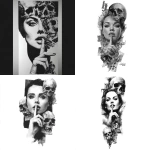


](https://images.ai-img.art/thumbnails/150/d29fcfc8037938184a641f7980e1102e24a6e82088bc465886d26ffe5bb006c7.webp)



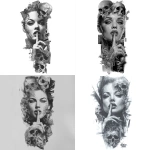
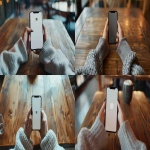
](https://images.ai-img.art/thumbnails/150/336026613fd234b8d6908fe18ecc09b2b2ecf7b8dfe294742041c9862dc499c1.webp)
